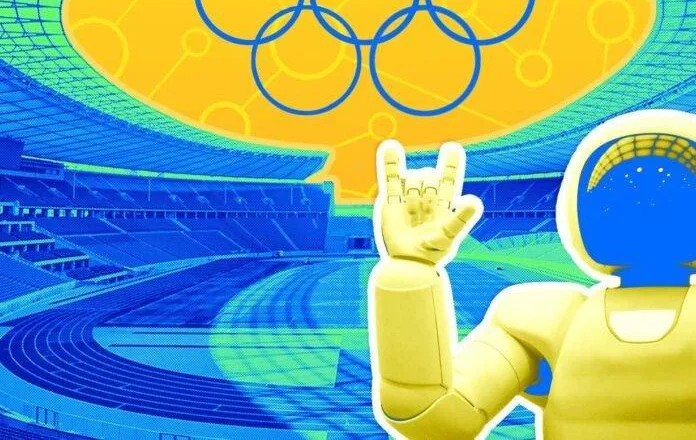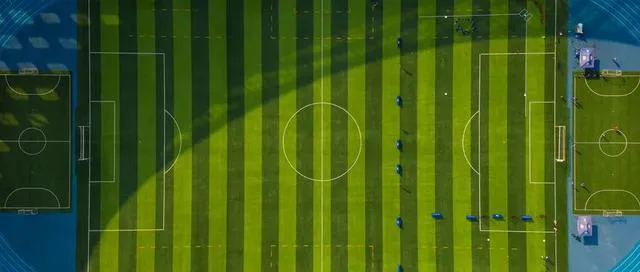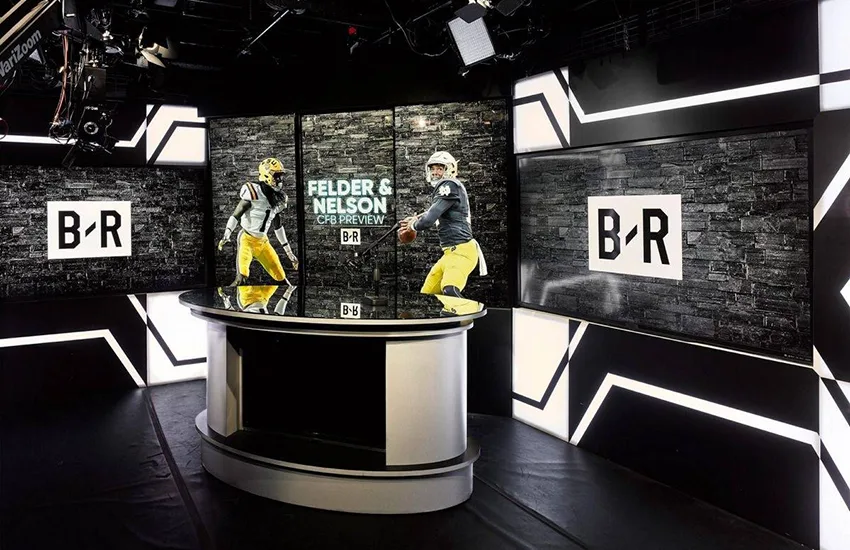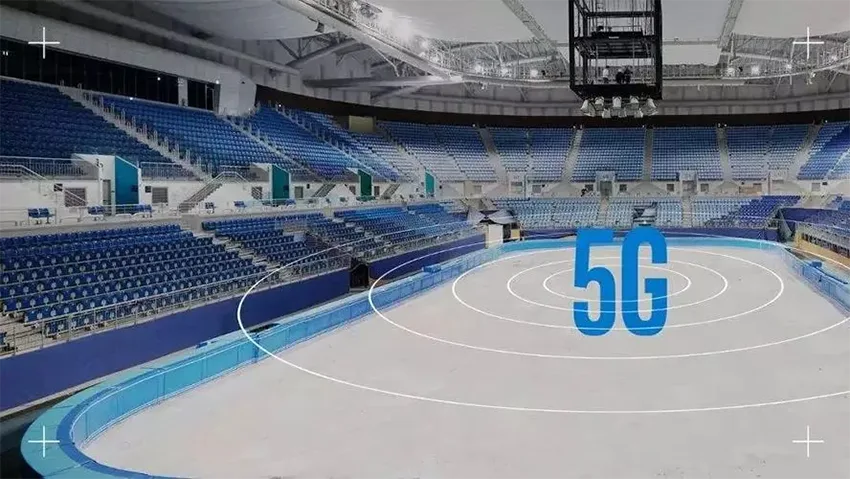In recent years, experts have realized the huge application potential of the IoT in sports field. Therefore, they are committed to developing new ways to apply these technologies. The introduction of IoT in sports is revolutionizing the sports industry, creating a new experience of seamless interaction for athletes and spectators.
1. What is IoT in Sports?

The launch of “smart sports” is intended to implement the national strategy of national fitness, develop the sports service industry, and focus on the use of information capabilities to improve the operating capacity of sports venues. It also contributes to meeting the increasing needs of the masses for sports, so that sports become a healthy lifestyle for citizens.
From a technical point of view, “smart sports” is to realize the monitoring and perception of users’ sports behavior through the application of new technologies such as Internet of Things technology, mobile Internet technology, 5G communication technology, and various sensors. At the same time, it also includes the use of big data algorithms such as cloud computing to comprehensively analyze and process sports data, user data, and management data, providing intelligent feedback and decision support for various needs. Smart Sports builds the infrastructure of smart sports by rolling out a digital network to serve stadiums and people.
2. Which IoT technologies are used in smart sports?

The digital wave has profoundly changed the world, and the sports industry is also at the moment of digital change. How to make the audience have a more perfect viewing experience? How to run venues smarter? Solving these problems is the focus of the development of sports venues in the era of intelligence.
With digital and intelligent means, we have built a safe and controllable sports stadium based on 5G, the Internet of things, AI, big data, and other technologies. Lean cost and excellent operation are the characteristics of this kind of smart gym. We have also built a safe and green smart sports stadium with the digital platform as the core.
Robot assistant
The robot assistant was used for the Tokyo Olympics in 2020, which was invented by Toyota. The robots greet spectators and athletes and provide on-the-spot assistance. Robots can help players on the field to complete sports games together, for example, they can help athletes retrieve shot put and frisbee thrown by them. And they can remind athletes to stay away from thrown sports equipment and lead them through dangerous areas to prevent them from being hit and injured. Considering that the Olympic Games involve players of different languages from all over the world, to make the robots play a better role, experts have specially programmed multiple language systems for them, so that they can understand and communicate in multiple languages. Connecting robots through the Internet of Things enables them to communicate and move. At the same time, they can plan and choose their routes.
Scanner camera
Accuracy is the most important criterion for a sporting event. In track and field competitions, for example, it is very important to know exactly which athlete is the first to cross the finish line. So replay cameras play a very important role in sports games. Precise special scanner cameras have been widely used in subsequent games since they were first used at the Rio 2016 Olympic Games, which help referees determine the winner by fine-tuning the analysis and filming of the event.
Pool lap counter
The pool lap counter can be used to record the number and speed of swimming laps of an athlete. It is hung on the pool wall for athletes to touch as they reach each length. The data recorded by the counting sensor can help to track athlete records and progress. Moreover, using the accurate tracking data of the sensor, it is possible to accurately determine who is the first person to touch the wall to reach the finish line during the swimming competition, ensuring the accuracy and fairness of the swimming competition.
Arrow shooting sensor
Archery is also a competition that requires extremely high precision. Before the Internet of things, archery experts would locate arrows. In today’s competitions, IoT sensors can be used to confirm the position of the shear, and the data can be displayed to the audience on the big screen. Moreover, the accuracy of these sensors have accuracy is up to 0.2mm. The archery target also includes a force sensor in the bullseye, which instantly scores points.
Security camera system
Security is an important component of big sports games. The IoT security cameras are helping to monitor crowds and keep tabs on venues at the Rio Olympics. For the Tokyo Olympics, tech companies are beefing up cyber security. Tech companies can root out hacked connections by testing hackers’ devices.
3. Advantages of the IoT in sports

01. The development of “smart sports”, for sports venues, can help them fully mobilize the upstream and downstream resources in the fields of venue marketing, venue booking, sports training, and sports social networking, creating a new business model and attracting more consumers.
02. The development of “smart sports” can enable stadium practitioners to obtain refined user data and operating data, according to which they can analyze user portraits and understand user preferences, facilitate the subsequent marketing strategy arrangement, and create conditions for the intelligent operation and upgrading of stadiums.
03. The development of “smart sports” can optimize the consumption experience of users in sports venues. With the assistance of various intelligent sports equipment, it can not only maximize the control of labor and energy costs but also improve the exercise effect of users.
4. Application examples in smart sports

01. Improve training efficiency and safety for athletes
Historically, the analysis of athletes’ training results and performance has been done manually with the aid of humans, or through slightly more advanced software and applications. The development of big data in the modern age has strengthened our connection. With the adoption of IoT in sports, athletes will be trained and analyzed with the help of IoT sensors in their clothing and insole. IoT sensors are used in smart watches, smart sportswear, and other sports equipment to track and record the sports performance and health of athletes. The data collected can be used to analyze the athlete’s performance level, fitness, stress, injuries, etc.
02. Intelligent sports venues
In the modern era, any stadium has WIFI and multiple display electronic devices installed. Not only that, the rapid development of the Internet of Things has prompted the widespread use of IoT sensors in major stadiums, which has promoted the optimization and management of stadium resources. For example, sensors can manage the operation of electronic equipment such as ventilation and HVAC and monitor the frequency of use of various electronic equipment, which can prevent equipment failure and notify relevant personnel to repair in time after equipment failure. The sensors have greatly assisted the normal operation of the gymnasium.
03. Better fan engagement
Some news noted that attendance at Major League Baseball was down 6.5 percent in 2018, and average attendance was the lowest on record in the past 15 years. Any sport can face this situation and result in millions of dollars worth of financial losses. One of the reasons for the low attendance of stadiums is that they are not getting a value-for-money spectator experience, which is most likely due to poor infrastructure in the stadium. Therefore, the application of IoT in sports activities can greatly help improve infrastructure and improve the audience experience.
04. Extra sports income and savings
Sports organizations can produce additional revenue with the widespread use of IoT equipment in sports. Data on viewer behavior and purchases collected through IoT sensors can be sold to advertising partners to analyze and plan advertising strategies, which in turn allows advertisers to create new ads to target specific customers. Sports organizations, on the other hand, can offer customized packages based on audience data, including perks such as uniforms and merchandise, stadium Tours, food supplies, and seat upgrades.
In addition, athletes’ data will help sports manufacturers create products tailored to their individual preferences. The energy in the stadiums and training facilities can be economically used with the help of IoT sensors. In addition, the use of renewable resources such as solar energy to replace non-renewable resources such as oil can reduce the budget and meet the sustainable development requirements of environmental protection and energy saving. Predictive maintenance of equipment in stadiums and training facilities prevents equipment failure, which is more costly than maintenance.
05. The realization of intelligent sports experience
After realizing the potential of the Internet of Things in sports, many companies have started to invest in advanced stadiums and sporting goods. However, the IoT market in sports is still fairly rudimentary, so sports organizations need to be prepared for the coming IoT technology takeover. To do this, organizations can create their policies and build the infrastructure accordingly, but this approach is prone to failure and costly property damage.
5. Smart sports solutions

01. Before exercise
The pre-sport digital revolution is about solving the problem of intelligent supply and demand matching between users and stadiums. For users, the use of digital platforms show venues based on information, such as location, environment, facilities, coaches, resources and cost, bookings, etc., can also further show the number of real-time motion and participants in the sports friends of the user, with the help of the Internet and social relationship chain, solve the problem of asymmetric information between the user and the facility operation, to the user’s decision to provide enough support, It can also expand more users and help the stadium to guide the flow, which greatly improves the operation efficiency and benefit of the stadium.
02. During exercise
Optimize the entire process from when the user arrives to when he leaves the exercise area. When entering the venue through the Numbers in the APP ID or facial recognition of access control devices, and code validation functions, to identify the user’s identity, recording to the shop, the user has no influence into play, and billing for venues will also no longer need to spend on repetitive identify manpower cost, and can focus to provide users with better service. During exercise, users can use smart sports equipment, body fat weighing equipment, hot water equipment, and storage locker with the help of smart bracelets to achieve the purpose of exercise effect monitoring and offline service acquisition, and help users solve the problems encountered in the process of fitness in a one-stop way. At the same time, through face recognition, intelligent monitoring, and system data monitoring, users and venue operators can be warned of violations and backtrack accountability, so as to minimize unnecessary cost waste.
03. After exercise
The previous sports experience ends after the user leaves the field, but in the smart stadium, the user can get the exclusive sports data report on the sports APP after leaving the field, and can also generate the user’s goal or other highlights through the motion capture system, so that the user can know more about his or her sports situation. All these data can be shared to third-party social platforms through videos and posters, which greatly increases users’ exercise enthusiasm and forms a virtuous cycle.
6. What devices do smart sports have?

Smart clothing
Smart clothing is leading the next frontier in physical training. The sensor-embedded clothing can not only record the fitness and training date in real-time but can also help to correct the athlete’s sports behavior.
Smart shoes
Equipped with gyroscopes, accelerometers, and pressure sensors, the smart shoes can analyze running patterns, measure strain, impact, and balance, and make recommendations to support training goals. The sensor-embedded shoes can help to prevent athletes from injury and can optimize their running posture.
Smart devices
The global smart sports equipment market is expected to reach $12 billion by 2026. The sensor-embedded sports equipment is helping athletes and coaches monitor, track, analyze their performance and improve their health and safety.
















